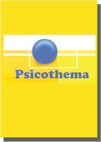Abstract
Background: This study examined the prevalence, characteristics and functions of Non-suicidal Self-injury (NSSI) among Spanish adolescents. Method: The sample consisted of 1,864 adolescents aged between 12 and 19 years (Mean Age = 15.32, SD = 1.97, 51.45% girls). The participants completed a modified version of the self-report scale Functional Assessment of Self-Mutilation (FASM; Lloyd, Kelley, & Hope, 1997) to assess rates and methods of NSSI used during the last 12 months. They also indicated the functions of NSSI. Results: NSSI behaviors are common among Spanish adolescents. More than half of the sample showed such behavior in the past year, and 32.2% had carried out severe NSSI behaviors. The functions of NSSI were examined by using confirmatory factor analyses. Results supported a hierarchical model consisting of two second-order factors: automatic reinforcement, which explained both positive and negative automatic reinforcement, and social reinforcement, which explained both positive and negative social reinforcement. Conclusions: These dimensions are critical to understand the factors that maintain NSSI behavior and have implications for treatments.Downloads
Download data is not yet available.
